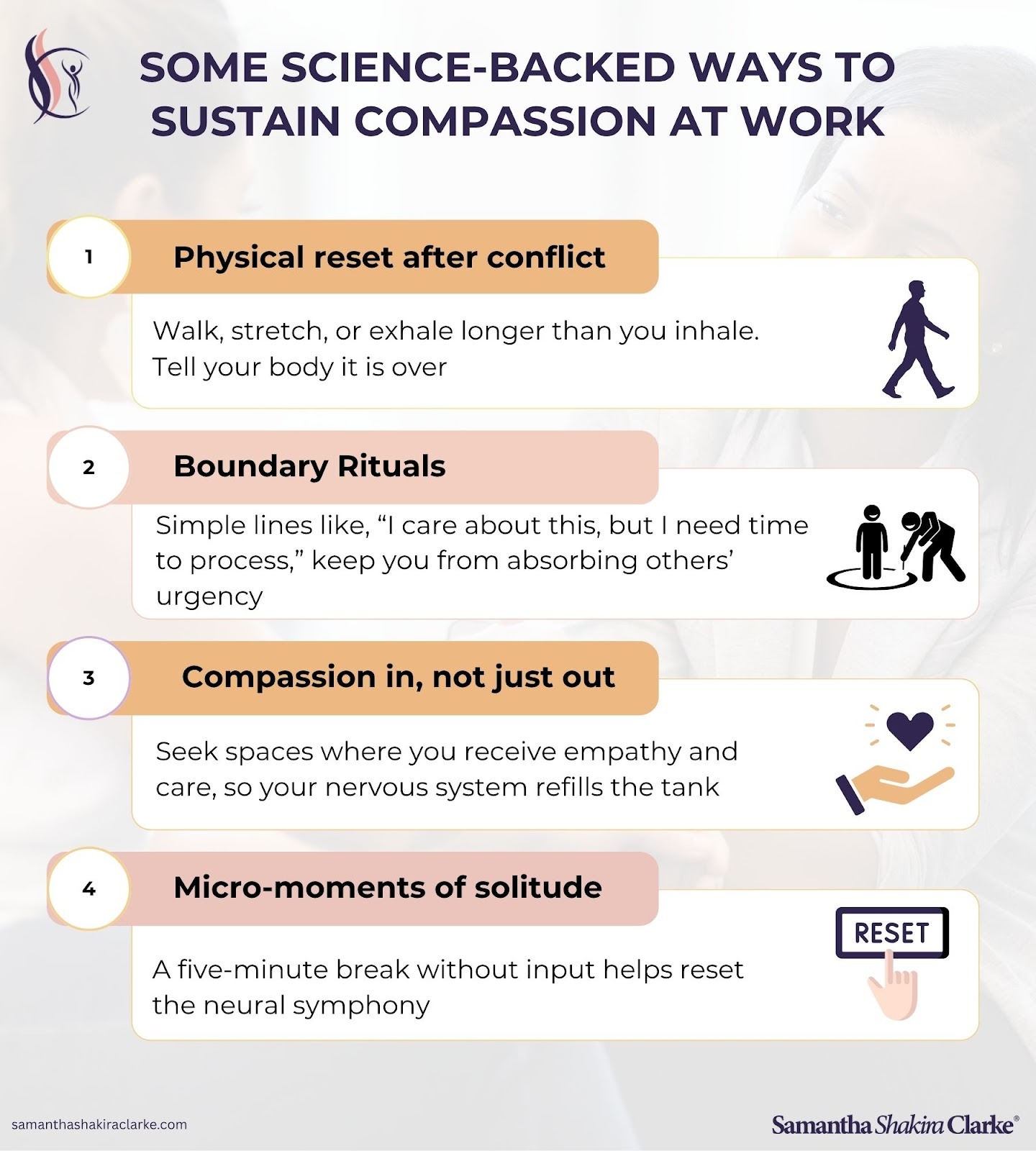 Book Now!
Book Now!Compassion is praised everywhere in modern workplaces, but few people realize it is one of the most metabolically expensive things your brain and body can do. We tend to picture it as something soft and effortless, like a warm blanket draped over the messiness of life. The truth is that compassion takes enormous energy.
That doesn’t mean it isn’t worth it. It means we need to understand the cost so we can practice it sustainably, especially in workplaces where compassion is demanded daily.
1. Multiple brain systems light up
When you feel compassion, your brain doesn’t just activate empathy centers. It recruits mirror neuron networks (to simulate another’s state), the prefrontal cortex (to regulate judgment and stay intentional), the insula (to sense your own body’s response), and the anterior cingulate (to process conflict and pain). That is a lot of circuitry firing at once. Your brain is running a kind of neural symphony, and symphonies burn more fuel than single instruments.
2. Oxytocin and vagus nerve regulation
Compassionate states pump out oxytocin, which fosters connection, and engage your vagus nerve, which keeps you calm. That is soothing, but the body is still working to shift your physiology into that state, especially if conflict or hostility is present.
3. The empathy to compassion split
Empathy, or feeling with someone, activates your pain circuits. Compassion, which is caring and wanting to help, shifts you into approach mode. To move from empathy into compassion, your body has to transmute the raw resonance of someone else’s suffering into something constructive. That is metabolically costly because you are transforming emotional energy rather than just absorbing it.
4. Self-regulation is calorie burning
When you stay compassionate in the face of hostility, like a friend snapping at you, you are holding back fight or flight reactions. Self-control takes glucose and oxygen. Studies even show blood glucose drops after heavy self-regulation tasks. That is part of why you feel wrung out afterward.
5. The evolutionary tradeoff
Compassion is one of the most advanced human states. It binds tribes together and ensures survival. But evolution made it expensive so that we would deploy it wisely, not constantly. Think of it like fire: powerful, warming, but always requiring fuel.
Here is the difference between compassion that sustains you and compassion that depletes you.
Healthy Compassion
• Feels energizing afterward, like you have connected meaningfully
• Involves clear boundaries: you care, but you do not carry
• Uses both empathy and perspective
• Leaves you able to return to your own center
Compassion Fatigue
• Feels exhausting, heavy, or numbing
• Boundaries blur: you absorb others’ stress until it becomes your own
• Empathy stays stuck at feeling their pain without transmuting it
• You find yourself irritable, withdrawn, or resentful
In the workplace, especially in caregiving, leadership, teaching, or wellness professions, compassion fatigue can creep in unnoticed. Left unchecked, it can look and feel a lot like burnout, but its roots are different. Compassion fatigue comes from the brain’s caregiving circuitry being overstretched, not just from workload or hours on the clock.
The solution is not to dial down your compassion. It is to pair it with practices that replenish you. Think of it like strength training. If you do not rest and refuel, the muscle tears down instead of growing.

Compassion is not free. It is one of the most expensive things your brain and body can do, which is exactly why it is so transformative. But if you ignore the cost, you slide into compassion fatigue, especially in workplaces where caring is constant.
Healthy compassion does not mean giving endlessly. It means giving from a place of regulation, then refueling so the cycle can continue. When compassion is sustainable, it does not just heal others. It keeps you whole too.
Compassion is meant to connect, not consume. When you practice it wisely, you do not just offer humanity to others - you also return humanity to yourself.